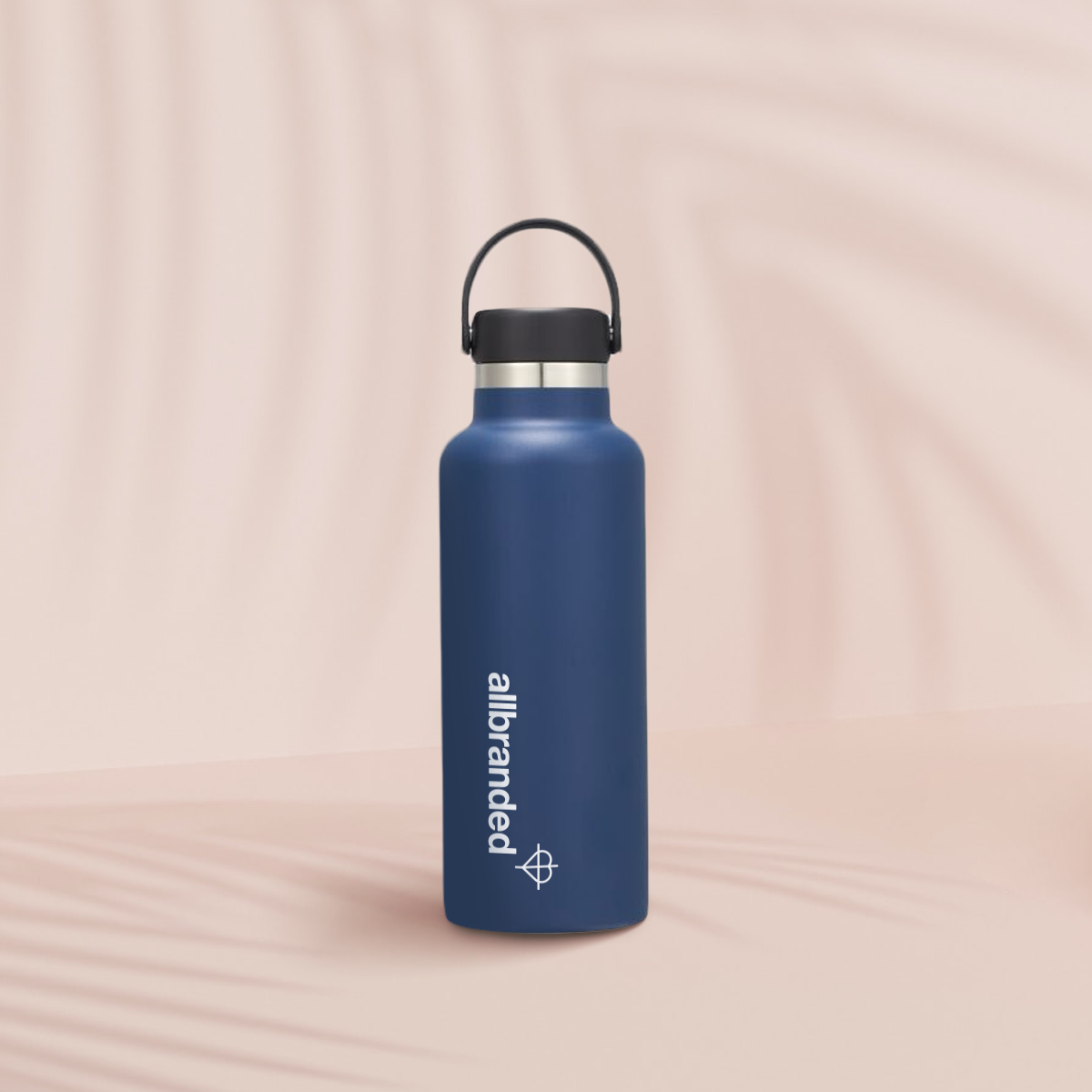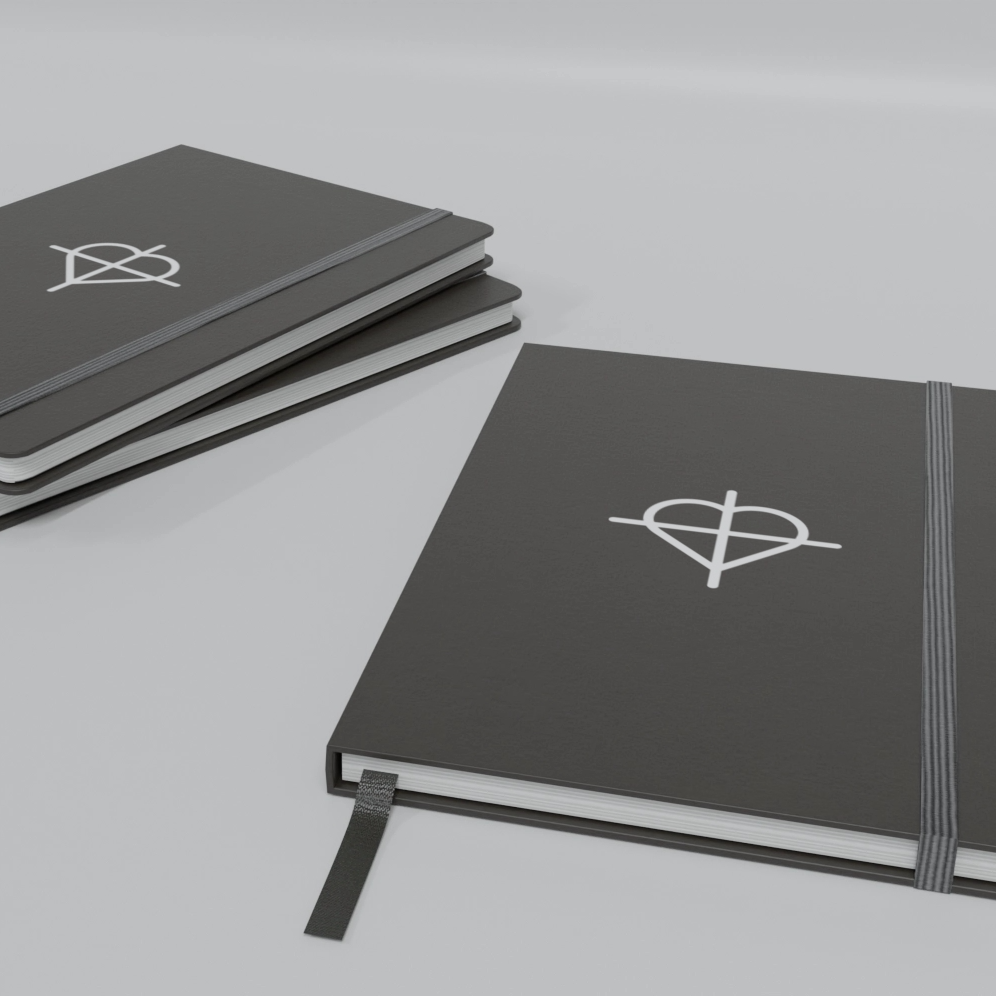Printing Techniques & Tips
Our Printing Techniques
Here, you get an overview of all common printing techniques that we use for the finishing of our promotional items. Due to the nature and material properties of the products, not all printing techniques are available for every promotional item. If you have any further questions about the respective printing methods, please contact the allbranded service team at any time. For any questions about colors, check out our Pantone® Calculator page. You are also welcome to take a look at our glossary. Here you will find all common printing processes explained in full.
Digital Printing
With digital printing, the print image is transferred directly from the computer to the printer. No printing form is required for production. The big advantage: Really any motif can be realised. There are no limits to your creativity for the design of your advertising material. This is especially useful if your logo is multicoloured and rich in detail. Nevertheless, it must be noted that surfaces may be smooth or only slightly curved so that the printing systems, such as the laser beam or the laser printer, can easily print your advertising material.
Doming
Doming is a new form of advertising material coating. Here, a curved surface coating made of resin is applied to a sticker, which is then attached to the promotional item. The glass optics create a three-dimensional effect in the motif. This means that the opposite effect of the embossing is achieved - the advertising message is raised outwards through a coating and thus attracts maximum attention. The doming of promotional items is characterised by a very high quality. The 3D stickers are waterproof, so that they are sustainably protected from all external circumstances. Here, too, it should be noted that the printing process can only be used on smooth surfaces.
Embossing
The embossing is characterised by the fact that the print pattern is stamped directly into the promotional item and sticks out inwards. Special machines are responsible for this, consisting of several heated steel rollers. The advertising material is placed between the rollers while the steel rollers are pressed against each other. This process gives the product its pattern. The advertising message has a long shelf life due to the embossing. Embossing is not possible on all promotional items. The embossing of promotional items such as textiles, fabrics and leather, as well as plastic products, is common.
Embroidery
The embroidery designates a high-quality textile finishing, with which company logos or advertising texts are largely produced as advertising imprint. As the name suggests, motifs are applied to a fabric with the help of computer-controlled needles and threads. Since there are different stitch techniques and threads, very individual print motifs are possible. As can already be assumed, this printing process can be used for all textiles. Surfaces can be flat as well as uneven. Due to the large selection of thread colours, several colours can be used per stick.
Flexographic
Flexographic printing is a letterpress process. In flexographic printing, the areas coloured with printing ink are higher than the non-printing areas. The printing unit consists of several rollers. Flexible printing plates are attached to the printing cylinder. These are made of rubber or photopolymer. An ink roller picks up ink from an ink tray and transfers it to an anilox roller. The anilox roller inks the printing plate. An impression cylinder guides the printing object against the impression cylinder. The colour is transferred from the printing plate to the print object with the help of high pressure. This process is mainly used on plastic surfaces, such as on packaging for confectionery.
Flock Printing
Flock printing is a transfer printing process. The print motif is cut out of a special film and transferred to the surface with the help of a carrier medium and a lot of heat. Flock printing is best for promotional items with a high percentage of cotton, but also for textiles made from synthetic fibres and polyester. Texts in particular are particularly effective. Differences to flex printing can be found in the feel of the print. While flex feels rather smooth, flock feels velvety.
Laser Engraving
Laser engraving is the modern standard in the field of engraving and permanently refines a wide variety of materials with a laser beam. The extremely hot laser beam burns or vaporizes the material. The laser engraving creates structures that are different from the rest of the surface. In the case of organic materials such as paper or wood, colour is created through chemical conversion processes of the material. In the case of coated materials, the uppermost coating is removed as part of a paint removal process, so that the colour underneath comes to light.
Offset Printing
Just like transfer printing, offset printing is an indirect planographic printing process. This means that the colour is not printed directly on the promotional item, but is transferred to a printing plate via a rubber blanket cylinder. Only then does it reach a rubber blanket, and finally it is legible again on the surface of the printing material. The standard process colours CMYK are used here. This means that all colour nuances can be mixed accordingly.
Pad Printing
The special feature about pad printing is that the design is applied to the advertising material with a stamp. In addition, the pad printing process is currently the cheapest and perhaps the most functional printing process for your personal advertising. In contrast to transfer or screen printing, the advantage of this printing technique is that round and curved surfaces, such as cups or ballpoint pens, can also be printed. Pad printing is therefore a cost-effective alternative for surfaces of all kinds.
Relief Printing
Relief printing is a very modern printing method and is derived from offset printing. This means that classic offset printing is mixed with a special resin powder. The mixture is then heated strongly and a tangible, smooth elevation is created, in glossy or matt. This special printing process gives the advertising message or company logo a specific 3D effect on the advertising medium. This printing process is particularly common on paper.
Screen Printing
Screen printing is the process during which the printing pattern is lightly printed on the surface of the promotional item. With the help of a rubber squeegee, the colour is printed onto the base material through a sieve. The advantage is that the colours appear particularly bright because the colour application is strong. However, it should be noted that the surfaces of the advertising material must be particularly flat and straight. For this reason, screen printing is the standard printing method for lanyards and textiles.
Transfer Printing
With transfer printing, colours are steamed onto the surface of the advertising material using heat. This makes it possible to provide your promotional items with precise patterns and photos that make your personal promotional gifts even more vivid. On the positive side, it should be emphasised that the print is resistant to UV radiation and other environmental factors, such as rain. Transfer printing is only possible on smooth surfaces. It is mostly applied to polyester. Thanks to the special process, there are numerous colours to choose from.
Printing Tips
In order to get your advertising message across, it is important that your logo is perfectly presented on your promotional item. An original promotional product - beyond boring mass-produced goods - in combination with your company logo ensures undivided attention and a high recall value. At allbranded, you can design your promotional products individually - easily and conveniently. Inspire your customers, employees and business partners with unique advertising materials and giveaways. allbranded offers a wide range of finishing options.
Creating Your Own Artwork
Find out now what and how to create your own artwork. In order to achieve the best possible print result, you must adhere to these artwork guidelines when creating your print data. The specifications for your print file depend on the promotional item you have chosen. In many cases, we only need your logo. For product-specific information, please contact our customer service.
Vector Graphics
To meet allbranded's quality standards, only high-resolution vector graphics are used in our printing processes. A vector graphic is made up of lines, curves and surfaces, which are described mathematically precisely with so-called vectors. The opposite of vector graphics is raster graphics. Vector graphics have the following advantages over raster graphics: - They can be continuously enlarged, reduced, compressed and distorted without loss of quality. - The file size is smaller - The properties of individual lines, curves or areas are preserved and can be changed later. Examples of vector graphic formats: - Encapsulated Postscript (EPS) - Portable Document Format (PDF) - Adobe Illustrator (AI) Non-vectorised files are e.g. jpg, png, tiff, gif Our vector graphics service for £25 net. Please provide us with your graphics in the mentioned formats to ensure that the requested products can be produced in high quality as usual. If you are unable to provide a vector graphic, allbranded will be happy to do so for £25 net. If you have any further questions, please contact our service team on 0800 410 10 20 or send an e-mail to customerservice@allbranded.co.uk.
Embedding Fonts
Embedding the fonts used is extremely important for printing data that is true to the original. Embedding means that all information about the font is included in the file. This is necessary in order to reproduce the font on another output device on which the font may not be installed and to visualise and create it correctly in the final print. Read all about embedding fonts here.
Convert Fonts to Paths
If you encounter problems when embedding the fonts, you should convert the fonts to paths, as this can lead to errors when saving and displaying them.
Colour Profiles
If you encounter problems when embedding the fonts, you should convert the fonts to paths, as this can lead to errors when saving and displaying them.
Print resolution
The print quality of a poster, photo or other print product depends largely on the resolution of the print data. The print resolution is specified in the unit of measurement dpi (dots per inch).
CMYK vs. RGB
In the final creation of print data, the choice of the right colours is particularly important. In image processing, a distinction is made between two colour spaces: CMYK and RGB.




.png)
.png)
.png)
